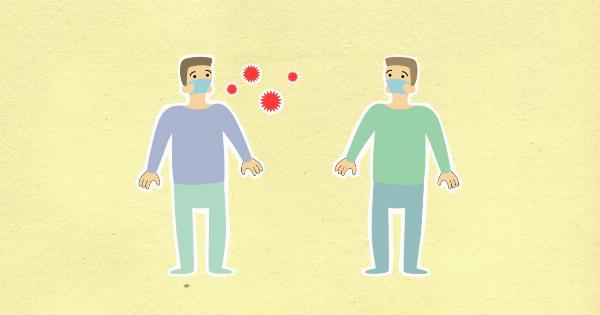Bird flu, also known as avian influenza, is a contagious viral infection that primarily affects birds. While it rarely infects humans, there have been instances where the virus has crossed the species barrier, resulting in severe illness and even death.
In this article, we will explore the facts and myths surrounding bird flu to separate truth from fiction.
1. What is Bird Flu?
Bird flu is caused by various strains of the influenza A virus. These viruses naturally occur in wild aquatic birds, such as ducks and geese, without causing any harm to them.
However, the virus can be transmitted to domesticated birds, such as chickens and turkeys, and cause severe outbreaks in poultry farms.
2. How is Bird Flu Transmitted?
Bird flu is primarily transmitted through direct contact with infected birds, their droppings, or contaminated surfaces. The virus can survive for extended periods in the environment, making it easy for other birds to contract the infection.
Additionally, the virus can be spread through the respiratory secretions of infected birds, which can be inhaled by humans who are in close proximity to them.
3. Can Bird Flu Infect Humans?
While bird flu predominantly affects birds, certain strains of the virus can infect humans, leading to severe respiratory illnesses. Most human cases of bird flu have been linked to close contact with infected birds or their carcasses.
It is important to note that human-to-human transmission of bird flu is extremely rare and has only occurred in a limited number of cases.
4. Symptoms of Bird Flu in Humans
The symptoms of bird flu in humans are similar to those of other types of influenza. They include:.
- Fever
- Sore throat
- Cough
- Muscle aches
- Headache
- Fatigue
In severe cases, bird flu can progress to pneumonia, respiratory failure, and other life-threatening complications.
5. Is Bird Flu a Pandemic Threat?
The potential for bird flu to cause a global pandemic in humans depends on the characteristics of the virus. While sporadic cases of human infection have been reported, sustained human-to-human transmission is rare.
However, it is crucial to monitor the virus closely as its ability to mutate could result in a more serious threat to human health.
6. Prevention and Control Measures
Prevention and control measures are essential to minimize the risk of bird flu transmission. These include:.
- Good biosecurity practices in poultry farms
- Regular monitoring and testing of birds
- Proper quarantine procedures for imported poultry
- Wearing protective equipment when handling birds
- Thorough cooking of poultry products
It is important for governments, poultry farmers, and individuals to collaborate in implementing these measures to prevent the spread of bird flu.
7. Vaccination for Bird Flu
Scientists are continually developing and improving vaccines for various strains of bird flu. Vaccination of poultry has proven to be an effective strategy in controlling the spread of the virus in bird populations.
However, due to the ever-evolving nature of the virus, the development of vaccines for humans remains a challenge.
8. Myths about Bird Flu
There are several myths surrounding bird flu that contribute to misinformation and unnecessary panic. Let’s debunk these myths:.
Myth 1: Eating Chicken Can Cause Bird Flu
This is entirely false. Bird flu cannot be contracted through consuming properly cooked chicken or eggs. It is important to ensure that poultry products are thoroughly cooked to kill any potential viruses, but there is no need to avoid them altogether.
Myth 2: Bird Flu Spreads Rapidly among Humans
As mentioned earlier, sustained human-to-human transmission of bird flu is rare. Most human cases have been associated with close contact with infected birds.
Therefore, there is no need to panic about the virus rapidly spreading among humans like a typical seasonal flu.
Myth 3: All Birds Carry Bird Flu
While certain strains of bird flu can infect various bird species, it does not mean that all birds carry the virus.
Wild birds can be carriers of the virus without showing any symptoms, but domesticated poultry are more susceptible to infection and develop severe illness.
Myth 4: Bird Flu Can Be Cured with Antibiotics
Bird flu is caused by a virus, not bacteria, so antibiotics have no effect on it. Antiviral medications may be effective in treating some cases of bird flu in humans, but they need to be administered early in the illness for optimal results.
Myth 5: Bird Flu Is the Same as Swine Flu
Bird flu and swine flu (influenza A/H1N1) are caused by different subtypes of the influenza virus.
While both can cause severe diseases in humans and have the potential to lead to pandemics, they originate from different animal reservoirs and have distinct genetic characteristics.
9. Importance of Early Detection and Reporting
Early detection and reporting of suspected cases of bird flu are crucial in preventing the spread of the virus.
If you notice unusually high bird mortalities or birds exhibiting signs of illness, it is essential to contact local veterinary or public health authorities promptly.
10. Conclusion
Bird flu is a serious viral infection that primarily affects birds but can also infect humans under certain circumstances. While the potential for a global pandemic exists, human-to-human transmission of bird flu is rare.
By following appropriate preventive measures, practicing good hygiene, and debunking common myths, we can reduce the risk of bird flu and ensure the safety of both birds and humans.






















